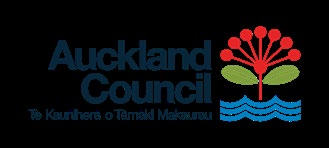
08 July 2021
Official Information Request No. 8140008820
(Please quote this in any correspondence)
Matt Munro
By email
: [FYI request #15799 email]
Dear Matt
Local Government Official Information and Meetings Act 1987
Re: Kauri Dieback
Thank you for your email, received on 15 June 2021, requesting further information about
Kauri Dieback. I have liaised with members of the Environmental Services department and
they have provided the following information. Your specific questions are answered in the
response set out below.
Auckland Council has recently confirmed a long-term framework for monitoring kauri dieback
disease prevalence and incidence expanding on previous surveys. This revised framework
is currently being implemented currently within the Waitākere Ranges. Information on the
design and information that wil be gathered from this are explained in a recorded webinar
using the following link:
https:/ conferencelive.watch/kauri/
1) Is it true that the last survey of the Waitākere Ranges found that “70% of infected
trees are within 50 meters of a track” or “70% of the (Kauri Dieback) problem is within
50 meters of tracks”?
This statement is incorrect. The Waitākere Kauri Dieback Report 2017
(copy attached)
states that “There is a close relationship between kauri dieback zones and their
proximity to the track network, with 71% of kauri dieback zones and 56% of possible
kauri dieback zones within 50 m of a track”.
The Waitakere Ranges Report analysis used a spatial representation (i.e., zones) and
not an individual tree calculation. This means that an individual site or data-point may
represent multiple trees in a stand.
2) Did the last survey of the Waitākere Ranges provide evidence that the rate of
infection close to tracks is significantly higher than in general?
There has been no attempt to calculate rate of infection on a tree-by-tree basis. This
would require surveying all (or a large, representative sample of) the symptomatic trees
and the healthy trees in the Waitākere Ranges at an individual tree level.
Private Bag 92300, Auckland 1142 | aucklandcouncil.govt.nz | Ph 09 301 0101
3) Is it true that (in the last survey of the Waitākere Ranges) only from 25% of Kauri
trees which were assessed as having Kauri Dieback PTA spores could be retrieved
from the tree or from the soil around them? That information was found in a book
about Kauri by Joanna Orwin.
The prior Waitakere Kauri Dieback Survey (conducted in 2015/ 2016) assessed disease
symptomology of trees, with soil sampling undertaken selectively for a subset of those
trees to understand if
Phytophthora agathidicida (p.a.) was present within sites or
catchments where it had not been confirmed prior. For that reason, it would be incorrect
to state that only 25 per cent of trees that were assessed as having kauri dieback
symptomology, returned soil samples positive for
Phytophthora agathidicida as the team
did not soil sample 100 per cent of the trees assessed. This was not the purpose of the
surveil ance design although the council is undertaking diagnostic test performance
evaluation as part of the 2021 Kauri Dieback monitoring framework which will improve
our understanding of the sensitivity and specificity of current and new diagnostic tools.
4) Had the Waitākere Kauri Dieback Report ever a positive external peer review? If so,
who was the reviewer and can you please provide his assessment.
The Waitakere Ranges 2017 Report was externally peer reviewed by Tony Beauchamp,
Planning and Intelligence workstream member for the Kauri Dieback Programme and
Technical Support Officer Ecology & Environment at the Department of Conservation.
(Please find copy attached).
5) Was the Waitākere Kauri Dieback Report 2017 ever orderly published in a scientific
journal?
No. The purpose of the 2017 report was to inform operational management of kauri
dieback disease in the Waitākere Ranges Regional Park. It was not intended to be a
scientific research paper and was not published in a scientific journal.
6) Was the closure of the Waitākere Ranges based on hard evidence (that people
walking the tracks indeed significantly contribute to the increase in Kauri Dieback) or
based on a precautionary approach?
The 2017 report examines disease distribution from a spatial perspective (defines kauri
dieback zones, where disease symptomology is present and then overlays this relative
to where kauri areas are). This was then used to calculate the kilometres of track
passing through the diseased zones. While the data within the 2017 report did not set
out to measure prevalence of disease which would determine whether the area near to
the track network was any more or less diseased than other areas in the Waitākere
Ranges, it did demonstrate that a large portion of the track network passes through
symptomatic forest and therefore represents a likely disease vector pathway. This
provided the rationale for upgrading the track network to reduce soil-borne spread of
kauri dieback disease both within the Waitakere Ranges Regional Park itself and further
afield to other forested areas with stands of kauri. This is often referred to as the
precautionary approach.
Decisions relating to the information that is being released to you were made by
Rachel
Kelleher General Manager Environmental Services.
Private Bag 92300, Auckland 1142 | aucklandcouncil.govt.nz | Ph 09 301 0101

Should you believe Auckland Council has not responded appropriately to your request, you
have the right by way of complaint, under section 27(3) of the LGOIMA, to apply to the
Ombudsman to seek an investigation and review of the decision.
Information about how to make a complaint is available at www.ombudsman.parliament.nz
or freephone 0800 802 602.
If you have any further queries, please contact me on 09 301 0101 quoting official information
request number 8140008820.
Yours sincerely
Angela Hare
Senior Privacy & LGOIMA Business Partner
Governance Services
Private Bag 92300, Auckland 1142 | aucklandcouncil.govt.nz | Ph 09 301 0101

